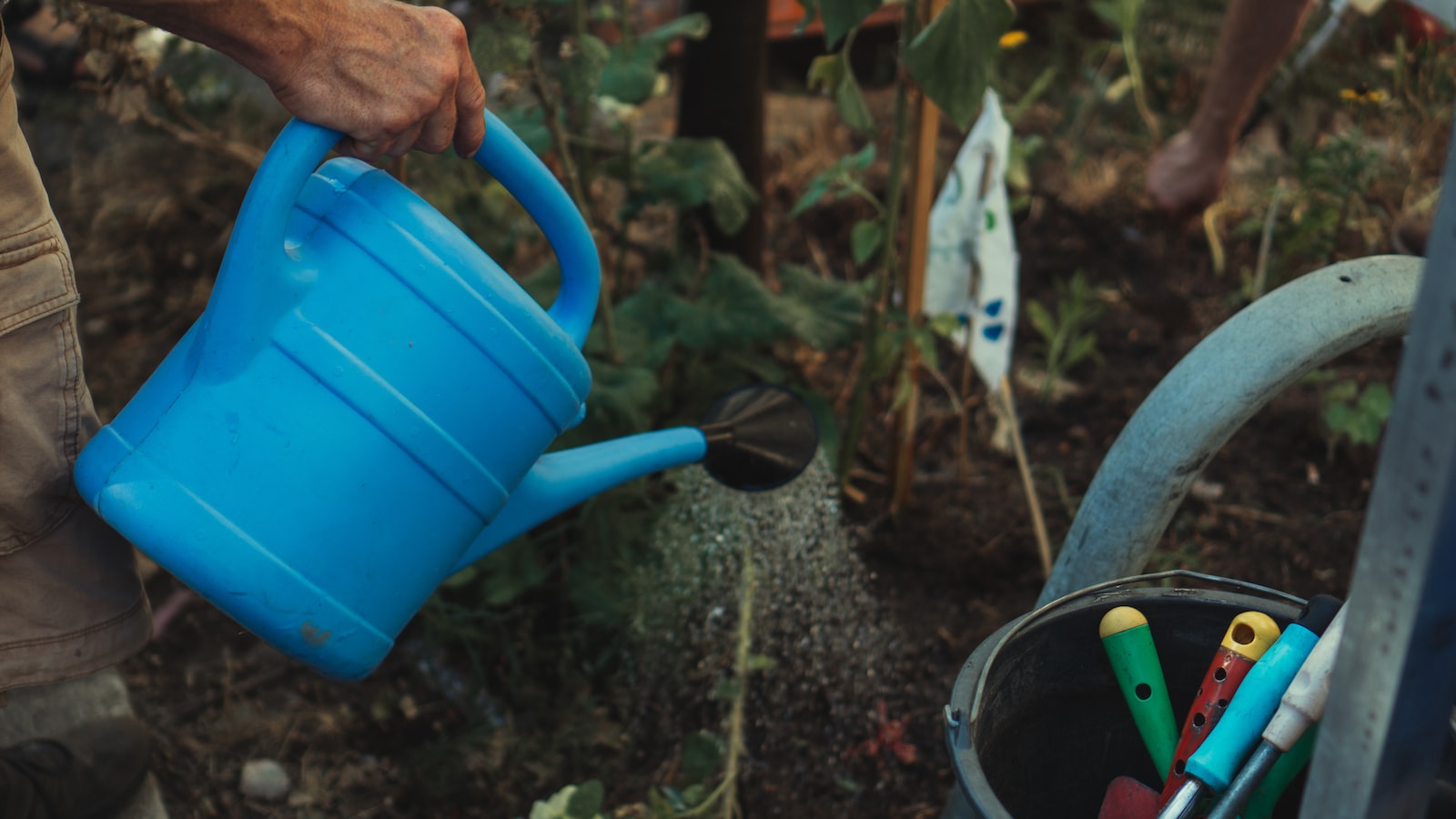Standing tall and proud, potted plants have the remarkable power to inject life into any space they inhabit. From elegant ferns that gracefully drape their emerald fronds to majestic palms reaching for the sky, these botanical wonders have the ability to transform a dull corner into a verdant oasis. Yet, as nature’s masterpieces, they can also be a bit rambunctious, prone to toppling over at the slightest nudge or gust of wind. So, how can we keep these lofty companions firmly rooted in their pots? With a touch of creative ingenuity and a sprinkle of horticultural wisdom, we shall unveil the secrets to safeguarding our taller potted companions, allowing them to soar ever higher without fear of a tumble. Prepare to discover a world where gravity’s rule no longer applies, and where potted plants defy the odds, remaining steadfast, upright, and forever flourishing.
Choosing the Right Pot and Stand for Stability
When it comes to keeping your tall potted plants from tumbling over, the key lies in choosing the right pot and stand for optimum stability. Plants that reach great heights can be quite top-heavy, making them more prone to tipping over or leaning to one side. To prevent any potential mishaps and ensure your plants stand tall and proud, here are some invaluable tips and features to consider for a sturdy foundation.
| Features | Tips |
|---|---|
| 1. Wide base to provide solid support. | 1. Opt for pots made of materials such as clay, concrete, or stone, which offer better stability due to their weight. |
| 2. Deep pot to allow for healthier root growth and anchor the plant more securely. | 2. Consider placing a layer of rocks or pebbles at the bottom of the pot to add extra stability and prevent excessive water pooling. |
| 3. Drainage holes to prevent water accumulation and avoid overwatering. | 3. Invest in a pot with a saucer or tray to catch excess water, ensuring it doesn’t leak onto the surface or compromise the stand’s stability. |
One vital aspect to pay attention to is the materials used for your pots and stands. Clay, concrete, or stone pots tend to be heavier and provide greater stability compared to lightweight options. These robust materials anchor the plant more securely, reducing the risk of toppling. Additionally, choosing a pot with a wide base is crucial, as it provides a solid support system for your tall plant. Remember, a sturdy foundation goes a long way in preserving the vertical integrity.
Having a deep pot is not only essential for healthier root growth but also helps in maintaining balance for taller plants. The extra depth allows the roots to spread out and anchor the plant more securely within the pot. Furthermore, consider placing a layer of rocks or pebbles at the bottom of the pot before adding the soil. This simple technique helps to improve stability by adding weight to the lower portion of the pot, preventing excessive water pooling and providing a more balanced center of gravity.
Ensuring proper drainage is another key factor for keeping your tall potted plants upright. Opt for pots that have drainage holes to prevent water accumulation, especially during rainy seasons or when watering your plants. Overwatering can increase the weight of the soil and potentially lead to the instability of the plant. To further protect the stability of your pot and stand, invest in a pot with a saucer or tray. This will catch any excess water and prevent it from seeping onto the surface, which could compromise the stand’s structural integrity.
By carefully selecting the right pot and stand for your tall potted plants, you can maintain their balance and stability. These features and tips will not only provide a secure foundation but also ensure that your plants can grow to their full potential without risking a disastrous fall. Remember, a little extra attention in choosing the right materials and considering these factors can make a world of difference in keeping your beloved greenery standing tall and thriving.

Providing Adequate Support with Stakes and Braces
When it comes to keeping tall potted plants from toppling over, is essential. These sturdy tools can help prevent plant damage, maintain attractive aesthetics, and support the healthy growth of your plants. Whether it’s a heavy windstorm or an accidental bump, using stakes and braces will ensure that your tall plants remain upright and flourishing.
Stakes act as upright support systems by anchoring the plant and providing stability. They can be made of various materials such as bamboo, metal rods, or even wooden dowels. Carefully drive the stake into the soil, ensuring it reaches the root zone without damaging the plant’s root system. Secure the stem firmly to the stake using soft, stretchable ties or plant clips.
Features:
- Sturdy stakes and braces provide support for tall potted plants.
- Prevent plant toppling during strong winds or accidental bumps.
- Help maintain an attractive and neat appearance for your plants.
Tips:
- Ensure the stake is tall and sturdy enough to support the height and weight of the plant.
- Position the stake slightly away from the main stem to avoid damaging the roots.
- Secure the plant to the stake loosely to allow for natural movement and growth.
Benefits:
- Maintains the health and growth of tall potted plants.
- Prevents potential damage or breakage caused by wind or accidental knocks.
- Preserves the aesthetic appeal of your indoor or outdoor space.

Ensuring Proper Watering Techniques to Maintain Balance
<p>Keeping tall potted plants upright can be a challenge, but with some careful watering techniques, you can maintain their balance and prevent them from toppling over. Proper watering not only nourishes your plants but also helps strengthen their roots, providing them with stability and resilience. Here are some effective tips to help you keep your tall potted plants firmly grounded:</p>
<h3>1. Adequate Drainage:</h3>
<p>Ensure your pots have drainage holes at the bottom. Excess water should be able to escape, preventing your plants from sitting in waterlogged soil which can lead to root rot. Use a saucer or tray beneath the pot to collect excess water and empty it regularly.</p>
<h3>2. Consistent Moisture:</h3>
<p>Check your plant's watering needs by feeling the top inch of soil. If it feels dry, it's time to water. Use a watering can with a narrow spout to direct water towards the base of the plant, allowing it to reach the roots more effectively.</p>
<div style="column-width: 50%; display: inline-block; vertical-align: top;">
<h3>Features:</h3>
<table style="border-collapse: collapse;">
<tr>
<th style="border: 1px solid black; padding: 5px;">Feature</th>
<th style="border: 1px solid black; padding: 5px;">Description</th>
</tr>
<tr>
<td style="border: 1px solid black; padding: 5px;">Self-Watering Pots</td>
<td style="border: 1px solid black; padding: 5px;">Consider using pots with built-in water reservoirs that provide a constant supply of moisture to your plants.</td>
</tr>
<tr>
<td style="border: 1px solid black; padding: 5px;">Mulching</td>
<td style="border: 1px solid black; padding: 5px;">Apply a layer of mulch on the soil surface to help retain moisture and prevent evaporation.</td>
</tr>
<tr>
<td style="border: 1px solid black; padding: 5px;">Sturdy Supports</td>
<td style="border: 1px solid black; padding: 5px;">If your plant tends to lean or sway, provide it with a sturdy support stake for added stability.</td>
</tr>
</table>
</div>
<div style="column-width: 50%; display: inline-block; vertical-align: top;">
<h3>Tips:</h3>
<ul>
<li><b>Water evenly:</b> Ensure water spreads evenly throughout the pot, reaching all sides of the root zone.</li>
<li><b>Monitor humidity:</b> Consider using a humidifier or placing a tray of water near your plants to increase humidity levels.</li>
<li><b>Observe plant behavior:</b> Look out for signs of overwatering or underwatering, such as yellowing leaves, wilting, or root rot.</li>
</ul>
</div>
Implementing Regular Pruning and Training for Additional Support
When it comes to keeping tall potted plants from toppling over, implementing regular pruning and training techniques can provide the added support your green friends need. Pruning not only helps maintain the plant’s shape and size, but it also helps to distribute the weight more evenly, reducing the risk of the plant leaning or falling over. By removing excess foliage and redirecting growth, you can ensure that your tall potted plants stay sturdy and balanced.
Training is another crucial aspect of supporting your plants. Use stakes or bamboo poles to gently guide the plant’s main stem in an upright position, fastening it loosely but securely with plant ties. This encourages upward growth while preventing the plant from leaning to one side. Additionally, consider using a trellis or plant support structure to provide stability and prevent the plant from swaying in the wind. Remember to check the plant regularly and adjust the support structures as needed to accommodate growth.
| Features/Tips | |
|---|---|
| Pruning: | – Remove dead or damaged branches |
| – Thin out overcrowded foliage | |
| – Trim back excessive growth | |
| Training: | – Use stakes or bamboo poles for support |
| – Secure main stem with plant ties | |
| – Consider using a trellis or plant support structure |
Frequently Asked Questions
Q: I have a tall potted plant that keeps toppling over! Any tips on how I can keep it upright and prevent it from taking a dive?
A: Ah, the saggy plant syndrome! Fear not, here are three tips to keep your towering greens on their feet.
Q: Help! I blame gravity for constantly knocking over my tall potted plants. What can I do to fortify them against these unexpected attacks?
A: Ah, the relentless gravity gang, always causing mischief! Worry not, fellow plant enthusiast, for I shall unveil three crafty tactics to shield your precious plants from unexpected somersaults.
Q: Vertical vegetation has become a passion of mine, but I can’t seem to conquer the wobbly nature of tall potted plants. Any clever techniques to keep my leafy comrades from teetering?
A: Ah, the wobbly tall plant woes, a challenge for even the plant whisperers among us! Fear not, vegetation devotee, as I unveil three ingenious strategies to help you conquer the art of stability and keep your lanky comrades from teetering over. As we bid farewell to this fruitful exploration of keeping our towering leafy companions steady and serene, we hope you’ve found our humble suggestions rooted in practicality, yet sprinkled with a dash of creative flair. Remember, safeguarding your tall potted plants from facing a sudden and untimely collapse is not merely a task but a delightful dance between man and nature.
Embracing some ingenious techniques, such as anchoring with stakes or creating a support system with trellises, not only brings stability but elevates the aesthetic game of any green space. Don’t shy away from experimenting with innovative materials that might just become the unsung heroes of your garden theater, lending their strength to overshadowed saplings. Remember, it’s the artistry of thoughtful planning that ultimately allows towering plants to harmoniously bloom without forfeiting their graceful posture.
As you embark on this journey of nurturing your green companions, embrace the symbiotic relationship between beauty and practicality, and revel in the joy of seeing your tall potted plants thrive, all while maintaining their proud stance. With due diligence and a pinch of imagination, these living giants will become not just a mere backdrop, but the enchanting stars of your verdant sanctuary.
So go forth, intrepid gardener, and let your imagination take root as you unveil the magic hidden within the world of tall potted plants. Whether regaling guests at a garden party or manifesting an oasis of tranquility in urban confines, the wisdom you’ve acquired here will fortify the bond between pots and plants, ensuring a future where tall topples are but a faint memory.
As we part ways, may your greens always sway gracefully in the breeze, standing tall and strong, rooted firmly in the soil beneath. Keep nurturing, keep experimenting, and let your imagination know no bounds. After all, life is too short for our beloved plants to fall, so let’s ensure they always rise, reaching for the sky with pride and conviction. Happy planting, fellow green-thumbed enthusiasts!
- When to Put Weed and Feed on Lawn in Michigan - October 16, 2023
- When to Fertilize Potatoes Plants - October 16, 2023
- Can You Plant Clover in the Spring - October 16, 2023

